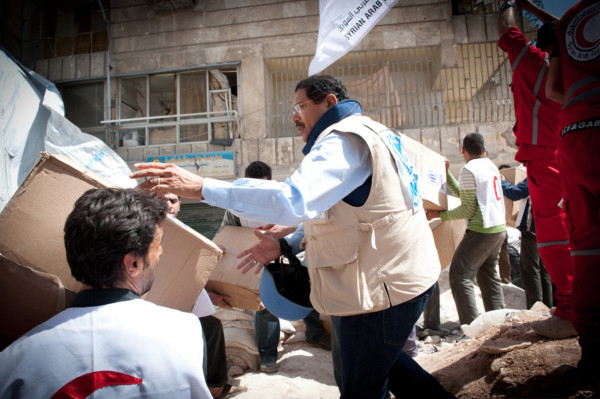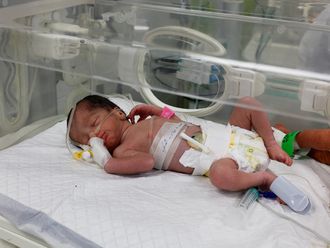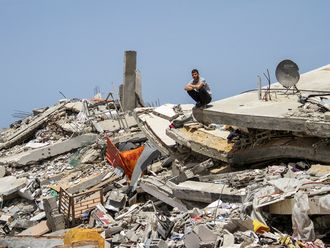
Beirut: Shelling and firefights between Syrian government forces and rebels in the northern city of Aleppo killed at least 29 people, activists said on Sunday.
The fighting occurred a day after both sides in Syria’s civil war claimed a village near Damascus fell victim to a poison gas attack.
The Britain-based Observatory for Human Rights said that at least 16 rebels were among those who died in the overnight combat with President Bashar Al Assad’s forces. At least 13 civilians were also killed when government aircraft dropped barrel bombs on the city’s three rebel-held districts late on Saturday, the Observatory said.
Another activist group, the Syria-based Local Coordination Committees, reported heavy fighting in Aleppo, saying Al Assad’s warplanes launched fresh air strikes there on Sunday.
Aleppo, Syria’s largest urban centre and its one-time commercial hub, has been a key front in the civil war since July 2012 when rebels launched an offensive there. The fighting has been in a stalemate for months as the city was carved into government- and rebel-held districts that residents increasingly find dangerous to navigate.
Both activist groups also reported air strikes on rebel positions in a village in the oil-rich Deir Al Zor province near the Iraqi border. The Observatory said at least four people were killed and scores were injured in that strike.
Over the past year Al Assad’s forces have relied heavily on their air force to regain control of territory the government has lost to the opposition, particularly around the capital, Damascus, and in the north, along the border with Turkey.
On Saturday the opposition and the government issued statements accusing each other of firing poison gas a day earlier at Kfar Zeita, a rebel-held village in Hama province some 200 kilometres north of Damascus.
The Observatory, which relies on a network of on-the-ground volunteers, said the gas attack happened during air raids that left heavy smoke over the area. It reported that people suffered from suffocation and breathing problems after the attack, but gave no further details.
Online videos posted by rebel activists from Kfar Zeita echoed images of an earlier gas attack that sparked a world outcry, showing pale-faced men, women and children gasping for breath at a field hospital. The videos corresponded with reporting by The Associated Press.
The main Western-backed opposition group, the Syrian National Coalition, said the poison gas attack hurt dozens of people, though it did not identify the gas used.
State-run Syrian television blamed members of the Al Qaida-linked Nusra Front rebel group for the attack, saying they used chlorine gas to kill two people and injure more than 100. It did not say how it confirmed chlorine was used.
Chlorine, one of the most commonly manufactured chemicals in the US, is used to purify drinking water. As a gas, it can be deadly.












